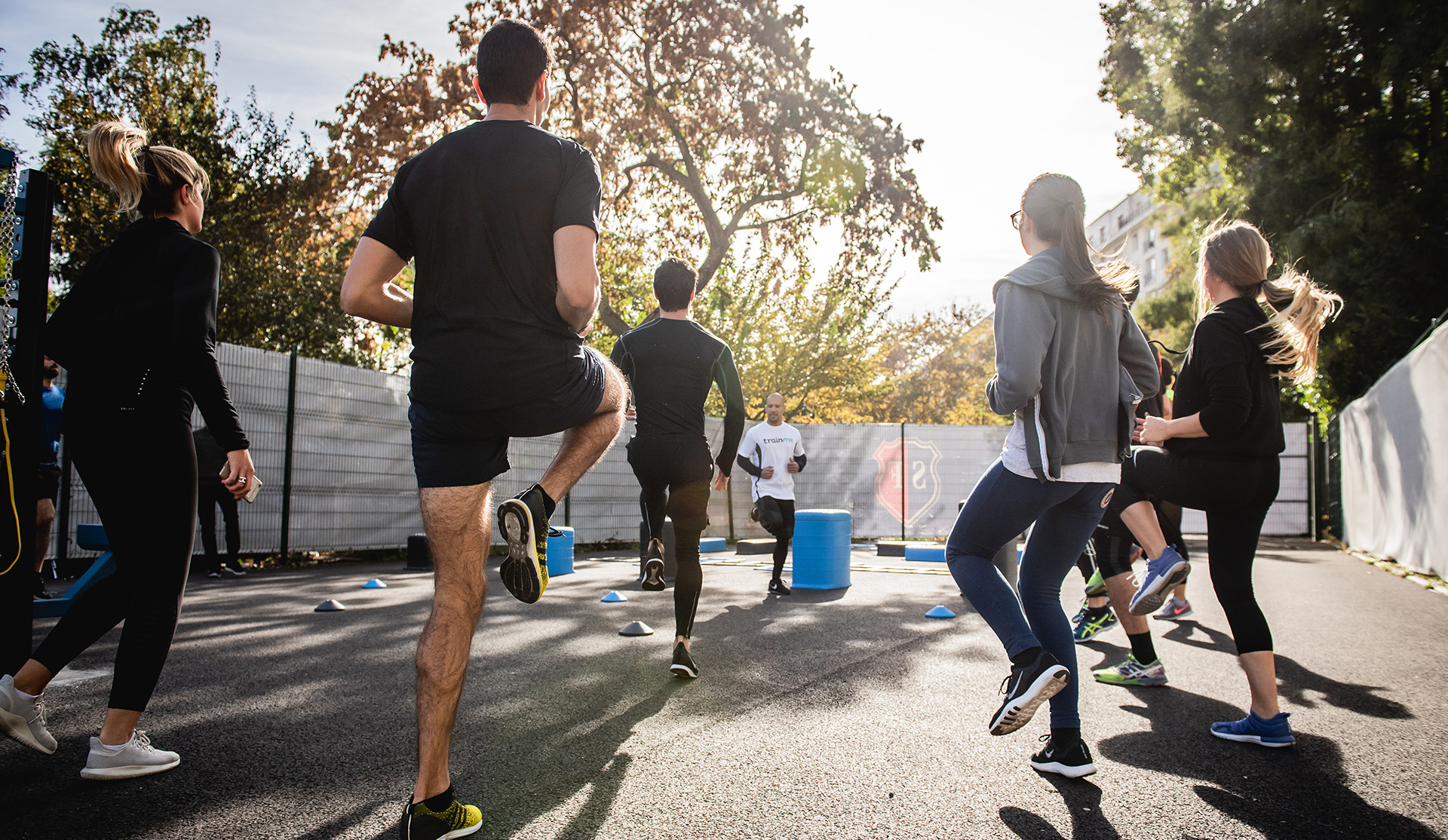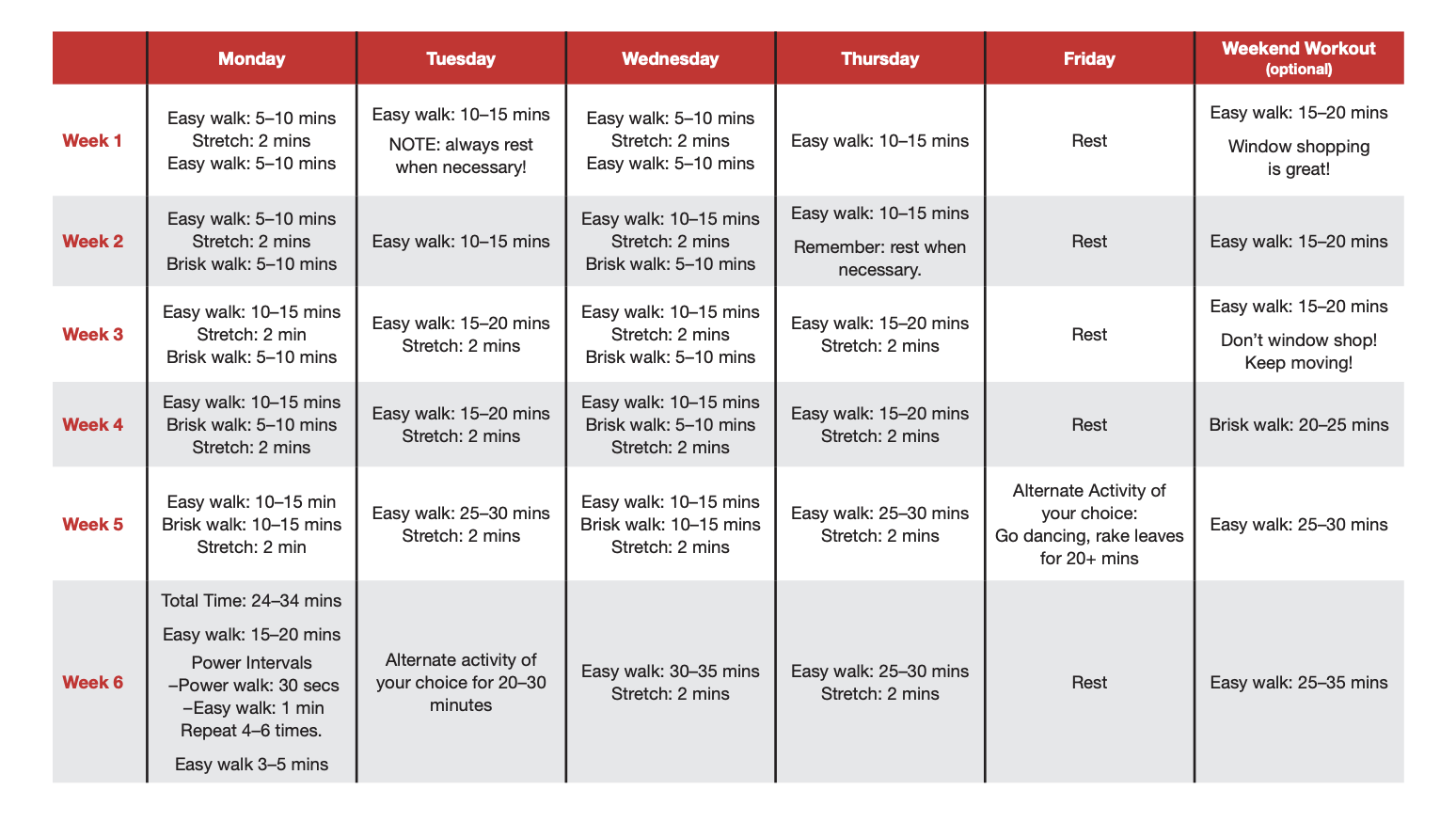Walking Resources
We have gathered some additional information and links that can help you start walking regularly or give you ideas on how to add some variety to your routine.
Walking is one of the best ways to add activity to your daily routine. The good news is that it is a simple, easy, and inexpensive activity. It can be done at any age and requires no special talent—all you need is a good pair of walking shoes. Walking is self-rewarding. It’s something you do for yourself to improve your health.
Walking for Vascular Health

What will a regular walking program do for me?
Reduce stress and help you relax
Help you control or maintain your blood glucose, blood pressure, cholesterol, and body weight
Improve muscle tone and endurance
Lower your chances of having a heart attack or stroke
Increase your energy level
Give you peace of mind that you are taking care of your health
How do I get started with walking?
-

Read our "Focus on Walking" Flyer
-

Walk with a Friend
Find a friend or family member who also wants to start walking regularly. You can cheer each other on and keep each other going, even when you may not feel like walking.
-

Follow a Walking Plan
This walking plan from the American Heart Association will help you walk more in only six weeks.
-

Take Care of Your Feet
Make sure you have walking shoes that fit well and socks that keep your feet dry. This will help protect your feet against blisters and sores. Download footcare flyer here
-

Use an Activity Tracker
You can use or smartphone app to help you monitor your progress and identify what routines work best for you. The Mayo Clinic offers helpful information here: Make it count with activity trackers.
-

Remember to Hydrate
Drink plenty of water to stay hydrated when you are walking. Take some water with you whether it is cold or hot outside. Water helps keep blood flowing through your body and joints moving smoothly.
-

Set a Simple Goal
Set a simple goal, like walking for 5-10 minutes during your lunch hour. When that has become a new habit, try setting another goal, such as walking for 20 minutes after work.
How can I add variety to my walking routine?
Try walking in places you enjoy, such as a local park or walking path
When the weather is bad, try walking in a local mall.
Vary your routine by walking along different routes
Listen to music or an audiobook while you walk. Make sure to keep the volume at a level where you can hear sounds around you
Consider using walking poles. Fitness Trend: Nordic Walking
Start or join a walking group: How to Start or Join a Walking Club from the American Heart Association
How can I overcome barriers to exercise?
Walking and PAD–If you have PAD, a walking program can make a big difference. Learn more from our “Focus on Walking” flyer.
If you have a chronic condition, the National Institutes of Health (NIH) offers information on “Exercising with Chronic Conditions”
If you are diabetic, the American Diabetes Association provides information on Blood Sugar and Exercise
Foot pain–If you have pain in your feet that affects your mobility, contact your doctor or podiatrist for help.
If cold weather is a challenge, check out this resource on Staying Active in Cold Weather from the National Council on Aging.
Should I see a doctor before I start walking?
According to the NIH:
“Most people do not need to see a doctor before they start a walking program. However, you should check with your doctor if you
have a chronic health problem such as a heart condition, diabetes, or high blood pressure
are over 40 years old, and have been inactive
You also should talk with your doctor if, while walking, you get dizzy, feel faint or short of breath, or have chest, neck, shoulder, or arm pain.”





